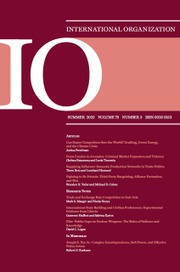No CrossRef data available.
Article contents
Elite–Public Gaps on Nuclear Weapons: The Roles of Salience and Knowledge
Published online by Cambridge University Press: 15 September 2025
Abstract
An explosion of survey experimental research shows that public support for nuclear use is alarmingly high and malleable. Thus, nuclear nonuse may depend on elite restraint. Can elites be counted on to resist nuclear use? How do national security elites think about nuclear weapons, and what does this imply for potential nuclear use and our understanding of public–elite gaps in political behavior? Drawing on the literature on public opinion formation, I argue that two features of public attitudes toward nuclear weapons help explain elite–public gaps on nuclear weapons: low salience and low knowledge. I then test this explanation using parallel preregistered survey experiments assessing support for nuclear use across three samples: the US public before the Ukraine conflict; the US public after the Ukraine conflict began; and a highly elite sample of US military officers and strategists, also after the Ukraine conflict began. While the US public is willing to support nuclear use, US national security elites are significantly more reluctant. Among the public, respondents for whom nuclear weapons are a high-knowledge or high-salience issue behave more like elites: they are less likely to support nuclear use. The findings have important implications for survey experimental research, scholarship on nuclear weapons, public opinion formation, and elite–public gaps in political behavior.
Information
- Type
- Research Note
- Information
- Copyright
- © The Author(s), 2025. Published by Cambridge University Press on behalf of The IO Foundation

